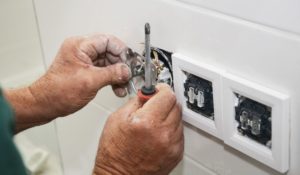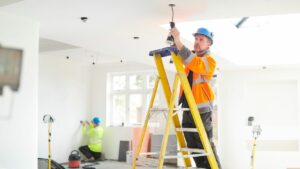Electrical installations play a crucial role in new builds, ensuring safe and efficient power distribution throughout the structure. However, new construction projects often present unique challenges that can hinder the smooth implementation of electrical systems. This article will explore the common challenges faced during new build electrical installs and provide practical solutions to overcome them.
I. Understanding the Challenges
A. Limited Space and Accessibility Issues:
In many new builds, space constraints and limited accessibility can pose challenges for electrical installations. Cramped electrical enclosures make it difficult to route wires effectively and maintain proper cable management. To overcome this, electricians can employ strategies such as using compact electrical equipment, implementing modular wiring systems, and planning for future expansion and accessibility.
B. Compliance with Building Codes and Regulations:
Complying with local building codes and electrical regulations is essential for the safety and legality of new build electrical installs. It requires familiarity with specific codes and ensuring proper grounding, bonding, and safety requirements for electrical equipment. Collaborating with local authorities and inspectors, engaging electrical consultants, and regularly updating knowledge on codes and regulations are effective solutions to meet compliance standards.
C. Integration of New Technologies:
As new technologies emerge, integrating them into electrical systems poses additional challenges. Smart home systems and automation, electric vehicle charging infrastructure, and compatibility with emerging technologies require careful planning and execution. Working with specialized installers for smart home systems, preparing infrastructure for future upgrades, and conducting thorough compatibility testing are effective solutions to address these challenges.
D. Energy Efficiency Considerations:
In today’s environmentally conscious world, energy efficiency plays a vital role in new build electrical installs. Implementing energy-saving lighting solutions, optimizing power distribution to minimize wastage, and incorporating renewable energy sources are essential for reducing environmental impact. Electricians can install energy-efficient lighting fixtures, utilize energy monitoring and management systems, and collaborate with renewable energy providers to enhance energy efficiency.
III. Solutions to Overcome Challenges
A. Space and Accessibility Solutions:
To address limited space and accessibility issues, electricians can utilize compact electrical equipment that fits within tight enclosures. Implementing modular wiring systems simplifies installation and allows for easier maintenance. Additionally, planning for future expansion and accessibility ensures that electrical systems remain adaptable in the long run.
B. Compliance Solutions:
Meeting building codes and regulations requires collaboration with local authorities and inspectors. Engaging with electrical consultants and experts helps ensure adherence to standards. Electricians should actively seek training and stay updated with the latest codes and regulations to maintain compliance throughout the new build electrical install process.
C. Technology Integration Solutions:
Successful integration of new technologies involves partnering with specialized installers who have expertise in smart home systems and automation. Preparing infrastructure for future technology upgrades ensures compatibility and scalability. Conducting thorough compatibility testing during the planning phase helps identify and resolve any potential issues before installation.
D. Energy Efficiency Solutions:
To improve energy efficiency, electricians can install energy-saving lighting fixtures, such as LED bulbs and motion sensors. Utilizing energy monitoring and management systems enables better control over power usage. Incorporating renewable energy sources, such as solar panels, reduces dependency on non-renewable resources and lowers environmental impact.
IV. Case Studies
A. Example 1: Overcoming Space Limitations in a Small Apartment Building:
In a small apartment building project, electricians faced limited space for electrical enclosures. By using compact electrical equipment, implementing modular wiring systems, and planning for accessibility, they successfully navigated the space constraints, ensuring efficient electrical installations.
B. Example 2: Compliance with Local Electrical Codes in a Commercial Construction Project:
During a commercial construction project, adhering to local electrical codes and regulations was critical. The electricians collaborated closely with local authorities, engaged electrical consultants, and received regular training to ensure compliance throughout the project. This approach resulted in a safe and legally compliant electrical installation.
C. Example 3: Integrating Smart Home Technology in a Luxury Residential Development:
In a luxury residential development, integrating smart home technology posed challenges. By working with specialized installers, preparing the infrastructure for future upgrades, and conducting thorough compatibility testing, the electricians successfully incorporated smart home systems, enhancing the residents’ comfort and convenience.
V. Conclusion:
New build electrical installs are not without their challenges. However, by understanding and addressing common issues, electricians can overcome these hurdles. Proactive planning, collaboration with experts, and continuous learning are essential to successfully navigate space limitations, comply with codes and regulations, integrate new technologies, and improve energy efficiency. As technology and industry standards evolve, the potential for advancements and improvements in electrical installations continues to grow. By staying informed and adapting to changes, electricians can ensure safe, efficient, and future-ready electrical systems in new builds.





